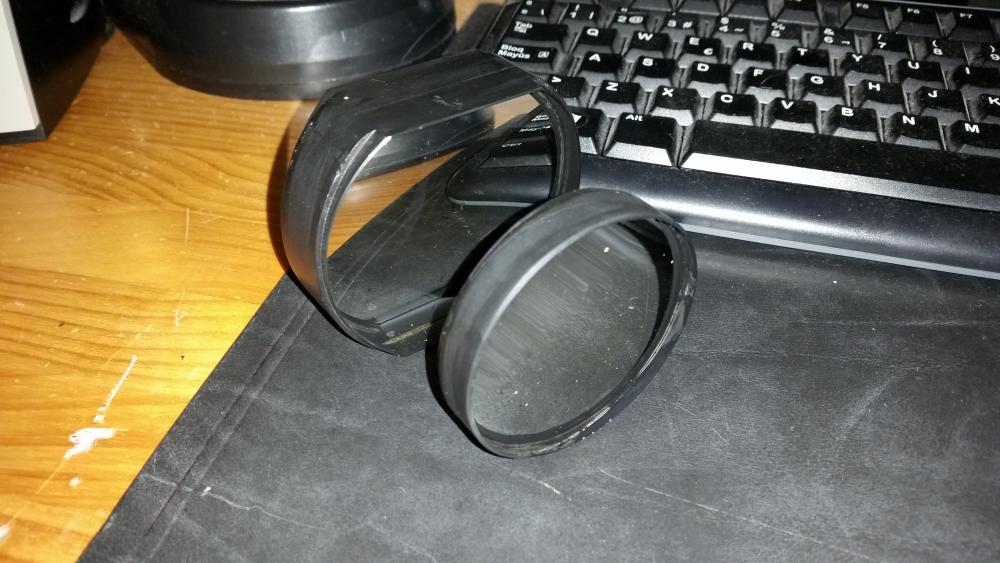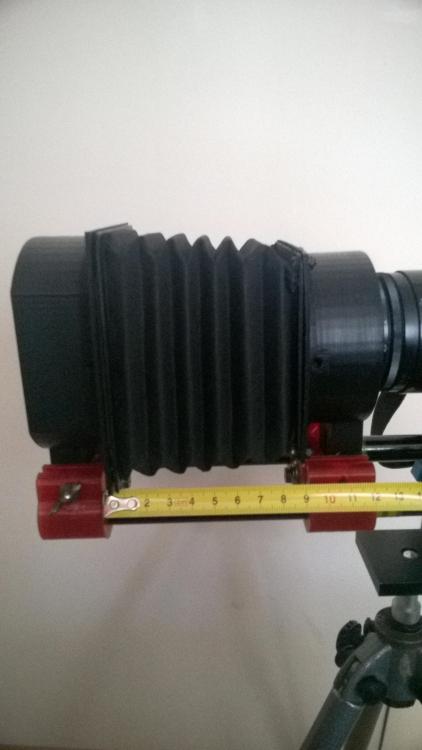Leaderboard
Popular Content
Showing content with the highest reputation on 10/14/2016 in all areas
-

Panasonic GH5: Multi-Aspect Sensor
Emanuel and 2 others reacted to theSUBVERSIVE for a topic
I wrote 5 articles speculating about the GH5, talking about possible codecs, what else can we expect but the most intriguing part is obviously the Photo 6K. Actually, from Photo 6K you can speculate about the sensor as well. In summary my conclusion is that it will be a multi-aspect sensor. Panasonic GH5: the Sensor has to be multi-aspect! My best guess is a 22+MP multi-aspect sensor, possibly based on DCI (1.8x crop) instead of 16:9 (1.85x crop*) for a bit more than 5760px wide and a Micro4/3 area of 20MP, possibly the same pixels size and count than Olympus E-M1 MK II. *we usually say 1.86x crop but if you do the math, it's much closer to 1.85x, but let's not get lost in technicalities because that's not the point and nor that important If Photo 4K has that name based on UHD at 3840 x 2160, then we could expect Photo 6K to be something around the 6K version of 16:9, so 5760 x 3240px. On Panasonic's press release, it says that Photo 6K is 18MP (6000 x 3000px) still grabs from video footage - which is a generic way to say it will have a video-like aspect ratio. But they also mention that the source of the video can either be 4:3 or 3:2, which is quite weird. Why wouldn't Panasonic even mention 3:2 as the video source? This is a clearly indication of full sensor readout, but why 3:2? The 16:9 multi-aspect sensor used in the GH1 and GH2 are almost 3:2 and a DCI based multi-aspect is 3:2, for me, this is another argument that it might be multi-aspect, otherwise, I don't understand why being a 4/3 sensor Panasonic would mention 3:2 aspect ratio as a full readout video source for Photo 6K. But why did they mention 4:3 then? Simply because they didn't want to confirm multi-aspect sensor, wouldn't people start asking themselves why a video from a 3:2? There is a possibility of Panasonic using a 4:3 of 25MP to 28MP? Of course there is, it's just very unlikely. More importantly, there were rumors saying it was going to be multi-aspect and also rumors saying 20MP. But why 20MP? Because the Micro4/3 portion of the sensor is 20MP, just like the GH2 was called a 16MP camera, when in fact it had more than that for the whole sensor. Plus, because part of the sensor is outside the image circle, the max resolution you get with the GH2 is indeed 16MP in 4:3, 15MP in 3:2, 14MP in 16:9 and 11MP in 1:1, therefore a 16MP camera. I said that the 20MP portion could have exact same pixel count as Olympus because I suspect they were developed together, the same way the E-M5 and GH3 had the same sensor, E-M1 and GH4 and also GX8 and Pen-F. It makes sense for the E-M1 MK II and GH5 to be based on the same sensor tech, plus, there were also rumors about Panasonic and Olympus sharing technology and even LSI components. Having the same pixel count and size, it's possible to share the sensor wafer, micro lens, color filter, etc. it saves you production cost money because you can both use the same parts, just different sized sensors. The greatest thing of multi-aspect sensors is that for lenses, nothing changes since it's all within the same image circle, so you can either use native lenses or focal reducers like Speed Booster without worrying about the extra FOV of the multi-aspect sensor. So yeah, when using the 0.64x Speed Booster, you could get less than 1.2x crop, even closer to 1.15x crop with the Speed Booster and multi-aspect sensor combo. I would still prefer less crop to use APS-C lenses like the Sigma 18-35mm f/1.8 and 50-100mm f/1.8, even more with IBIS, but for those wanting the 1.33 extra stop of light and closer to FF, then the 0.64x will get you pretty close to FF. Again, this is my best guess: 22+MP multi-aspect sensor DCI based (approx. 1.8x crop) or 16:9 based (approx. 1.85x crop) at least 5760px wide, probably a few pixels more to accommodate DCI 4K and Photo 6K the Micro4/3 portion and max resolution of the camera will be 20+MP, so the GH5 will be a "20+MP camera" 20+MP will be possibly the same pixel count and size as the E-M1 II I also wrote about other possibilities including other resolutions like 6114px or even the scenarios of not choosing a multi-aspect sensor. Just like I also countered the idea of Panasonic straight out deceiving consumers with nothing like 6K in Photo 6K but just 18MP, which I find kind of odd since there is no need to Panasonic to deceive consumers and they haven't done anything like that ever before. Photo 6K is not the main feat of the GH5, it's 10-bit 422 and 4K 60fps, why mention 6000 x 3000px if they were simply going for 30fps full sensor burst? There is always that possibility, but logically speaking that has to be less likely than going back to the GH line up roots of multi-aspect sensor. I mean, this line up was developed with multi-aspect in mind from the get go. But sure, this is still just speculation, but I like the odds of a multi-aspect sensor. If anyone is interesting in getting more in-depth about this, you can read the other articles. I think that the article about codecs or ProRes/DNxHR is also pretty interesting, even more for those wanting those codecs. My conclusion is that it's better to buy a proper 4K recorder with SSD than buying expensive high-speed UHS-II cards for such high bit rate, I don't think Panasonic would leave their trump card for just a few people that can afford that - the high-speed UHS-II would cost more than the GH5 or several GH5s). Panasonic GH5: Overheating and IBIS rant (part1) Panasonic GH5: Codecs and AF improvements speculation (Part2) Panasonic GH5: Mysterious Photo 6K and Sensor (Part3) Panasonic GH5: Slow Motion and ProRes/DNxHR (Part 4) It's worth noting that the E-M1 II full announcement is quite imminent and giving that the E-M1 II will have the same 200mbps Full HD All-I codec as Panasonic already use, the full specs of the E-M1 might gives a few hints about whether or not Panasonic and Olympus are really partnering up or how deep they are sharing and developing technology, and of course, hints about the GH5 as well. Anyway, this topic is about those wanting to really get in-depth about the speculation and possibilities of the upcoming GH5.3 points -

Petition for Samsung NX1 hack
Parker and one other reacted to Pavel Mašek for a topic
Give us more details, pleeease :-)2 points -
Just wanted to add a few of my notes for what it's worth. Slimraw 10-bit lossless log compression is awesome if space is an issue; and works perfectly with MLVFS to reduce wasted transfers. Resolve and cinemaDNG's makes for an efficient workflow; however, I've had problems recovering highlights in Resolve that Lightroom/ACR have no problems with (magenta cast in highlights and checkered artifacts). For example, the center strip in this video shows the same footage processed with Lightroom vs Resolve on the sides:2 points
-

Projection anamorphic adapter 35 NAP 2-2 modified sample video
Justin Bacle reacted to zeonmaster for a topic
Excuse me for my english, I'm from Ukraine! I suggest you test video and some photos of the modified anamorphic adapter 35 NAP 2-2. adapter cost $ 40. used camera Nikon d800 and lens Samyang 85/1.4. focusing is possible from 1.1 meters to infinity (depends on the main lens). later I will make a casing for the adapter and the mechanism of simultaneous focus control and lens adapter. be pleased to answer all your questions! "> "> Download the original video clip and photos of each - http://www.ex.ua/view/75243102, login zeonmaster-seller, password zeonmaster. http://www.youtube.com/watch?v=X39356HgF0k http://www.youtube.com/watch?v=ZkjG8litZ6w http://www.youtube.com/watch?v=kkI7AsIBYZw1 point -
If the Alexa Mini was an option, I would have one by now. No. Two! Haha. I get where you're coming from. Some are reporting success with it on some G7 bodies. Not sure what the key is there. I don't really need 30+ mins recording per se, and as I didn't want to set-up my cameras again from scratch after checking out how legit it would be... and being scared of losing the installed legit V-Log L... I haven't tried it myself. You can try recording externally... but yeah... that's not really 'solving' the real problem.1 point
-
Petition for Samsung NX1 hack
Marco Tecno reacted to LawDude for a topic
Me too. An EF to NX adapter with AF is a game changer for the NX1. I was about to pre-order a Sony a6500 with an EF adapter when I saw Luca's video. Now I'm holding off to give Luca's adapter a shot when it's ready.1 point -
Nikon Flat Profile Question...
Mattias Burling reacted to mercer for a topic
Good to know, I like inconspicuous cameras. I think I have tested nearly every brand of cameras this past year, and I've learned I still like Canon the best, but I've been dying to use this Flat profile, so hopefully the D5500 will be a tool I will keep for more than 6 months.1 point -
Google Pixel XL Camera Sample 4K - The Best Yet?
Don Kotlos reacted to The Chris for a topic
Not joking, I went looking for the video after it disappeared. I didn't see what the OP posted, but this one has come up as the Cinematic Pixel fake, and the poster supposedly did the same thing with the iPhone for the clickbait. https://9to5google.com/2016/10/09/check-out-this-stunning-4k-footage-taken-with-the-pixel-xl-video/1 point -
Nikon Flat Profile Question...
mercer reacted to Mattias Burling for a topic
I have only played a little bit with the d5500 so I cant say anything for sure. But one thing I do love about the d5500 is the size, its tiny.1 point -
Nikon Flat Profile Question...
Mattias Burling reacted to mercer for a topic
Dang, that's a good test! Does the 750 have more DR than the 5500? As you may have read, I picked up a Pocket last week and have used it a couple times with the Panny 12-35mm, all handheld. I used the focus button to grab quick focus and then the ring to do any racks. So far, it seems like a nice set up. The OIS is good, the screen is fine with focus peaking, except the camera is getting excessively hot. Almost too hot to hold. I haven't seen any hot pixels, but I'm not working it that hard either. As usual, the footage looks great... Minus the noise inherent with BM cameras. But as I have been looking at more and more footage, it almost seems redundant with my XC10... The ProRes files do not seem to be any better than the 1080 files from my XC10 and nowhere near as good as the 4K... But the S16 feel is so prevalent with both cameras, it seems like I am getting nothing more out of the Pocket that I don't already have with the XC10... Minus lens selection and Raw, but I have no real plans in shooting Raw with Pocket. So, I'm not really sure I see the point in keeping the BMPCC. Since the camera is running so hot, I think I'm just going to return it and the lens. On a whim, as I sometimes do, I ordered a D5500 yesterday and after watching your comparison video and a few other videos, I think returning the Pocket may definitely be the right call for me... Especially since I already have a small collection of Nikkor lenses and Tokina zooms.1 point -
Nikon Flat Profile Question...
mercer reacted to Mattias Burling for a topic
Its more saturated than bmd film. Closer to clog. But yes it gives you more shadow detail. At least one extra stop of DR, its 13 with no doubt in my mind. In this I put it next to the bmcc which would be very close to your bmpcc.1 point -
Nikon Flat Profile Question...
mercer reacted to Mattias Burling for a topic
I always leave it just as it is. Sharpness as well. Looks great imo.1 point -

Canon XC10 4K camcorder
kidzrevil reacted to hyalinejim for a topic
A Letter to Canon Hi Canon, Since you've already provided a firmware update for the XC10 I'm assuming you're open to feedback that will seriously improve the camera's image quality and handling. It's a good camera, but it could be great. Here are three major flaws and how to correct them PROBLEM 1: Image softening at high ISOs and ghosting artifacts. When the ISO is increased beyond 3200 resolution drops due to in-camera noise reduction. And at all ISOs, ghosting artifacts are visible when high contrast areas are in motion. In the manual it states that ghosting may become visible when certain Image Stabilisation modes are used. However, my tests show that ghosting artifacts exist equally across all IS modes, and even when IS is switched off entirely. The effect increases with ISO which leads me to believe it is a kind of temporal noise reduction which seriously undermines the image and the camera's ability to be used as a "run and gun" hand-held camera. SOLUTION: Allow the user the option of disabling noise reduction in-camera. Many users who are familiar with post production processes will be comfortable performing their own noise reduction to taste, thus preserving image detail and preventing motion ghosting. PROBLEM 2: Long throw zoom ring. In manual focus mode, the zoom ring usually has too long a throw, particularly at the telephoto end. At the wide end, focus throw is normal. However at longer focal lengths it takes too long to focus. To do a focus pull from 1 meter to infinity takes many rotations of the zoom ring, farther than the human wrist is capable of turning in a single motion. This slows down manual focus to an unusable level, and introduces unnecessary camera shake when shooting handheld. SOLUTION: Change the manual focus speed so that all focal lengths focus as quickly and easily as at the wide setting. Currently there are 3 manual focus speed settings, but the fast setting is still far too slow. PROBLEM 3: Physical exposure controls Full exposure control is accessible from the touch screen menu. However, when shooting handheld it's not convenient to access the touch screen menu while shooting. The joystick control introduces camera shake when pressed and is prone to directional error as it's so small. SOLUTION: Map more of the exposure controls to the dial wheel and buttons. For example: 1. Assign one of buttons 1, 2, or 3 to Exposure Lock 2. Enable Exposure Compensation on the dial wheel 3. Enable one of buttons 1, 2 or 3 to shift the function of the dial wheel in Manual mode, in the same way that aperture is controlled on the EOS Rebel cameras. Implementing these suggestions would seriously improve the image quality and handheld usability of the XC10. Please consider including them in a firmware upgrade. [End of Letter to Canon] That all seems fairly straightforward and reasonable doesn't it? Let them hear your voice: http://global.canon/en/support/index.html XC10 is under Camcorders > Cinema EOS1 point -
Sony Will Announce the A6500
Marco Tecno reacted to Phil A for a topic
Same rolling shutter = no interest. Keeping my a6300, which is kinda liberating. We'll see what the next A7 brings or maybe Blackmagic has a surprise at NAB next year.1 point -
Sony Will Announce the A6500
Marco Tecno reacted to gatopardo for a topic
And Phillip Bloom said in the live stream that rolling shutter effect is the same as a6300...1 point -
A camera comparison here: It seems that the Mavic files are less cooked, less sharpening and less noise reduction and it is a good thing assuming that this is a valid test (same settings, etc...)1 point
-
1 point
-
The reason they are so expensive is... the superior optics. Which... may or not be more valuable to you than a just fine enough performing cheaper ZY Optics/Zhongyi/Mitakon Lens Turbo II (dumb, without electronics however). And the fact they have that electronic connection and offer firmware support for it... now... there's one other option out there, the Aputure DEC LensRegain. But it's more of a system and kinda in the same ballpark. Otherwise you I believe you only either have the one or the other. Focal reducer, but no electronics... or electronics, but no focal reducer. (edit: actually, there's also the Kipon BAVEyes 0.7x EF-MFT with electronics as well, but if my memory serves me right, the optical performance is pretty much of the bottom level) My solution... don't buy Canon, don't buy EF lenses and get everything in Nikon mount. Allows for easy and simple mechanical aperture control and shaves some of the price of a Metabones XL by not requiring the costly electronic bits. Of course... the EF-mount itself is a little more flexible than the Nikon one... so... I went ahead and bought a Lens Turbo II for that (EOS - M4/3). So I can also mount e.g. the Contax Zeiss lenses with a C/Y to EOS adapter, whereas that would've been a bit troublesome with a Nikon-mount. Albeit not with the same focal reduction as the amazing and one of a kind Metabones XL.1 point
-
That is a result of the 5-axis stabilization. Whether it's Panasonic or Olympus, it's kind of unavoidable and present to a certain degree on all these cameras. The FZ1000 for example is like really really loud, I think (even when switched off, as otherwise gravity would have it's way with the freely moving elements when they're not supposed to move at all). It's not thát bad on these cameras, but the built-in mic does pick it up ever so slightly (you won't actually hear it recording something on the streets of a busy city, but you will when shooting a test in a silent closed off room). Then again, I'll hardly just solely use the audio from the video. And if you do, use a suspended directional mic as with the G80/G85 you now have a mic jack, anyways.1 point
-
Still from DJI's Lisbon event...1 point
-
STRUCTURE FOR ANAMORPHIC LENS
Tito Ferradans reacted to Paquito Coria for a topic
Hi, I´m paquito. I start this post, because i have a questions about what to do with these lens unmounted ( attached photo). I have unmounted them, because the structure was broked and i must to do that. My question is , if i can mount them attached to a bellow ( https://www.amazon.com/Fotodiox-Macro-Bellows-Nikon-Camera/dp/B003EDYDVM/ref=sr_1_2?ie=UTF8&qid=1476296019&sr=8-2&keywords=bellow+camera) and mounted on a rig (specially adapt or hook the lens to the structure) or if you know the way to mount on a structure even lighter than the previous were mounted. Thanks a lot to you in advance (specially to Tito Ferradans. I didn´t find the person who post this, so i post then)1 point -

STRUCTURE FOR ANAMORPHIC LENS
Tito Ferradans reacted to Dr. Verbel' for a topic
No problem. Make drawings for your case, 3d-print frames and mounts for your configuration. You may also add bellows. Necessary before printing CHECKS all sizes to fit your lens and mount for your configuration. 3D complete filling for printing. For frames solid plastic (ABS), for mount more plastic plastic (HIPS)1 point -
Thanks for your input. After further research i've decided to keep my eye out for an Elmoscope-II or a Kowa 16-H. Can't wait to start experimenting!1 point
-

35NAP 2-3M (mod) – precision, light streaks, bokeh
Juank reacted to Dr. Verbel' for a topic
1 point -

Panasonic GH5: Multi-Aspect Sensor
Orangenz reacted to theSUBVERSIVE for a topic
Apparently you agree with everything I said then because I also think Panasonic was very clear to what Photo 6K means. I wrote that "I also countered the idea of Panasonic straight out deceiving consumers". Because I received some response to my article of people saying exactly that, that Panasonic couldn't possibly achieve Photo 6K and that it was just marketing mumble jumble to deceive consumers. If you read the article about the multi-aspect sensor you will understand it better. What seems to happen is that a lot of people are misinterpreting Panasonic's press in a odd way but if you put everything together, this other interpretation doesn't make sense. People are reading like this: “6K PHOTO” is a high speed burst shooting function that cuts 4:3 or 3:2 still images out of a 18-megapixel (Approx.6000 x 3000effective pixel count) video footage that 6K image manages. So they think that it will be 4:3 or 3:2 images out of a 18MP video footage and they are ignoring the 6000 x 3000px reference. This is what one person said to me: "With a full sensor readout of a 20MP sensor, you can store 4:3 or 3:2 pictures with 30fps in a non standard video format. Because this 4:3 or 3:2 video format has approximately the same pixel count as 6k video they call it 6k." Some other people said that multi-aspect didn't make any sense and that they expected a 25+MP sensor. Anyway, I was just addressing what people that don't agree with multi-aspect sensor has been saying.1 point -
.thumb.jpg.c38e420d42fbcfca0e9d71918fb899b0.jpg)
After 3 years, I finally finish my film, shot with Nikons.
mercer reacted to Wild Ranger for a topic
Hi, thanks. I just expose by eye, just looking the screen.1 point -

Panasonic Leica 25mm f/1.4 or Olympus M.Zuiko 25mm f/1.2 Pro for the GH4?
Fredrik Lyhne reacted to Michael Ma for a topic
Optics are perfect. It is one of those lenses where you can just put it on f/1.4 and not really have to worry about not getting the best shot possible. The DOF is deep when focusing medium distance and further. And extremely shallow for macro. It's very versatile in that way. There is some vignetting at f/1.4 but I usually add a vignette to a lot of my photos anyway. Very rarely, a vignette has to be removed because it takes away from the photo. Only problems with aberration is when you don't have the focus perfect. Bokeh is beautiful. Focus is lighting quick and silent. Only significant drawback is that it doesn't have OIS. It doesn't need OIS for photos, but it could definitely use it for video. But the GH5 should have the 5-axis so maybe it won't be an issue. I have a few gimbals but I'd like to carry just a Manfrotto PIXI MINI these days.1 point -
1 point
-

Ursa mini...is this the end of blackmagic?
Michael Coffee reacted to IronFilm for a topic
Yes we do know Sony won't license E mount. And Canon EF mount has been around long enough it no longer has the same level of IP protect as E mount has, thus others can use it.1 point -

Sony a6500 limited record time
Geoff CB reacted to TheRenaissanceMan for a topic
No shutdown for a full 29:59 is great news. No improvement in rolling shutter...less great. Even with IBIS, that severely limits its versatility.1 point -
Your ideal NX1 Settings
Kisaha reacted to timmyturntable for a topic
Finalized my latest video...went with the SEDONA LUT on most of them...1 point -
1 point
-
The very underestimated problem of RADIOACTIVE lenses
Kisaha reacted to Mattias Burling for a topic
Im not a radiologist like Saadawi but I did some tests a while back.1 point -
1 point
-
Atleast the camera will be air cooled.1 point
-
Yes, indeed. One of the lighthouse shots (at 1:14) is pretty representative of such feature. Actually, the add-on is evident for that particular shot, comparing to the previous ones immediately before. Finer narrative tool.1 point
-
DJI just slaughtered GoPro with Mavic
shooter reacted to Dimitris Stasinos for a topic
Actually this is the best footage i have seen so far from the mavic pro. These images have the right amount of sharpness to my eyes. Also in the statue shot we can finally see the advantage of bigger focal length / shallower depth of field, as selective focus is not an option for a P4 owner. This is an example of how an experienced user can show the true potential of a product.1 point -
My perspective as well :-) This one seems legit too: BTW, here's already accessories offer:1 point
-
1 point
-
Thanks! Hercules is great for product shoots but it's a little fiddly to control as it only has one button and many settings. Would love it if they made an updated version with smartphone control. Some of the shots are also a bit wobbly and I'm not sure why, could be the IBIS though. If you're going to use the rail on a tripod it needs to be a steady one. Didn't work well with the gorilla pod, I used a Benro alu tripod . Small primes like PL 15mm and 25mm on the GX85 works very well with Hercules. It can tip over with bigger/ longer lenses so be careful. Haven't shot so much at night yet, but it holds really well up to 1600 ISO and pretty good at 3200. Did you see the ISO video I posted in this topic? Or @jase festival video?1 point
-
Very good quality! I only see some jerky movements here and there with slow motion, especially when the camera is pointed down (but maybe it is the compression from youtube) and some strange reflections when backlight, for the rest it is really impressive!1 point
-
1 point
-
X5/X5R are another league... Let's not mix up apples to oranges ;-) Phantom 4 or Karma have nothing to do with. The reception theory ; ) can fit but people are still stuck on the wrong variables, obsessed with definition when this doesn't necessarily mean better IQ, on the contrary, more often than we could aspire to.1 point
-
Mio caro, exactly my POV! We both share the same cinematic perspective on motion pictures, let it alone the aerial footage. Unfortunately, people are too uneducated with their small displays. We live in a sad age where artifacts are the king. Sawtooth borders (when not aliasing) are taken for sharp content... What else can we say? *Phew* To me, this is the first small drone to focus my attention on it. For the same reasons you mention. Still from the European press presentation in Lisbon (I know very well those locations and how curious is to me to see them to be shot like that with so tiny capture device -- DJI should/could/can slash the GoPro business with that toy/cam beyond the drone industry) take a look from 3:48 minute on:1 point
-

Sony Will Announce the A6500
Xavier Plagaro Mussard reacted to Cinegain for a topic
They're trying to stimulate grey import, or what?1 point -
You're welcome and absolutely right! https://vimeo.com/185182140#comment_149959771 point
-
Aputure: the Blackmagic of lighting
TheRenaissanceMan reacted to photographer-at-large for a topic
120d http://www.newsshooter.com/2016/09/11/ibc-2016-aputure-light-storm-120d-is-the-daylight-version-of-their-120t-led/1 point







